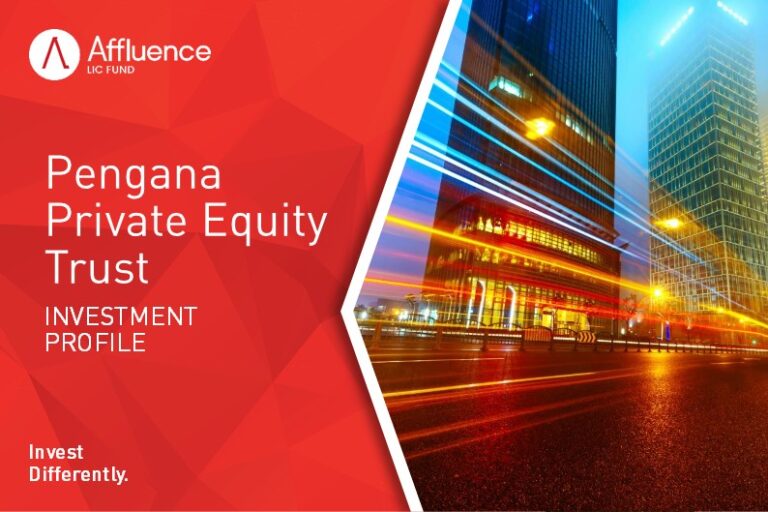We are often asked about our portfolios – the managers and funds we invest with. Many people want to know why and how we choose them. In our Affluence Fund Portfolio January 2018 review, we provide an explanation of how the Fund portfolio is structured, how we expect it to perform, and what our perfect investment looks like.
Why we exist
It might pay to start by restating what we do. It seems perfectly obvious to us, so if you already know this, you can skip this section. But to those new to Affluence, it might help to set the scene.
At its most basic, we do three things:
- Find the best fund managers (professional investors) available in Australia. We are assessing the individual investment teams. The people making the investment decisions. In doing so, we are backing the people, not the fund or the company. If the people change, the fund will not be the same.
- Invest in their funds, with an allocation based on our assessment of how good they are, how volatile the returns will be, and how well we expect the asset class they’re investing in to perform over the next 3-5 years.
- Maintain very diversified portfolios to try to make sure performance is as consistent as possible, without compromising long-term returns. Our main tool in this endeavour is spreading the portfolio across as many different investment styles as possible. In doing this, we tilt the portfolio towards sectors, styles and assets we feel have the best prospects, while at the same time refusing to accept any investments that we don’t think can meet our return targets.
That’s it really. We find great investors, who collectively can deliver fantastic returns at different times in the market cycle, to make sure that the long-term returns are as smooth as possible.
The Perfect Investment
Many people tell us a similar story. They struggle with where to invest, but not in the way you might think. The problem is that there are a great many potentially attractive opportunities, and they have trouble narrowing it down. There are just so many options that it gets confusing. We understand this very well. That’s why a big part of our investment process is directed to being able to quickly dispense with 95% of investment opportunities, and work very hard on the best 5%. In doing so, we risk screening out and missing one or two brilliant investments, but that’s still preferable to wasting our time with a lot of ordinary ones.
Our ideal investment exhibits four key features:
- The fund managers (the individual people) have a long history of outperforming a fair benchmark and delivering great returns.
- The fund managers have their own money on the line by investing in both the Fund they manage, and the funds management company being paid to do it.
- They are investing in an asset class that is demonstrably cheap or have a process which provides them with a significant advantage over others in the market.
- While their long-term performance has been great, their recent performance (say the last 1-2 years) has not been as good. And, we can put that down to their style of investing rather than other factors (for example, that they are managing too much money).
That last one is very important. Most investment money goes to companies or funds that have had 2-3 years of great returns. That’s usually a mistake, because much of that excess return over recent times is likely due to a combination of above average returns for their asset class and a favourable environment for their investment style. The very factors which delivered the great returns might well reverse in the next few years, leading that fund to deliver much less impressive returns. We prefer great long-term performers who’ve been doing it tough for the last while. Great fund managers all have tough periods, but very few forget how to invest.
We do also have a fifth factor. The cream on the cake could be that a fund or LIC can be bought for less than the value of the investments it owns. It’s nice to have, but this is not a requirement.
There are many other things that matter, and we usually don’t get all the above together. But when we do, it’s an easy investment to make.
How We Spend Our Time
Many people expect that we spend most of our time watching markets and making trades. But in fact, our style of investing is relatively low-turnover. Outside of our Affluence LIC Fund portfolio, which is a little more active, we average just a few investments each month. Many of those are driven by changes in our funds, as more investors come in and we put their money to work.
When we invest, we mostly tend to do so for the long term. We don’t very often sell or redeem our unlisted fund investments. If we do so, it’s likely to happen because of that fund being full, a key investment person leaving, the fund not performing as we expect it to, or where we’ve found what we believe to be a better alternative. None of these things happen very frequently. The other thing that could cause us to make substantial changes would be if markets became much more volatile, with bigger and more regular rises and falls. That is something we have prepared for, but have not yet had to endure.
And so, more than anything else, we spend our time searching, researching, watching and waiting for opportunities. Patience is a very hard skill to learn as an investor. But it’s quite often the most valuable.
How We Make Decisions
Greg and I work as a team, with input from Kane and many other people we regularly speak to. Greg and I make almost all decisions jointly. We have discretion to each make trades of up to 1% of a portfolio value without consulting each other, but it’s very rare that this happens.
We share the Affluence investing philosophy and beliefs, but we don’t always agree on individual investments. That’s OK. It will mean the odd compelling opportunity will be missed because one of us was perhaps too cautious. But more often than that, it will stop one of us doing something we shouldn’t.
A team of two or three is, we believe, a very good balance. Having a committee of five or more is lethal. It stops great investment decisions being made and stifles great ideas. Because most great investment ideas take courage. That’s something that most investment committees, and Boards for that matter, don’t have.
Affluence Fund Portfolio January 2018
Below, we’ve tried to give an outline of the current Affluence Investment Fund portfolio. How we’re invested and why. When reading the analysis, you should take three things into account:
- Many of our managers cannot easily be put into one category – for example right now, we classify the Packer Investigator Trust as a global equities fund. But Mr Packer is free to invest however he likes, and has changed the allocations substantially over the last 20+ years, usually to his investors advantage. Unlike many investors, we value that level of flexibility.
- Investment styles can be confusing. For example, on the surface our exposure to ASX listed companies looks high. But when you consider the level of underlying market exposure (or beta) it’s much less impacted by market movements than you might think. This is a very deliberate part of our investment strategy. We seek to smooth returns as much as possible, while not sacrificing the overall quality of those returns.
- We invest through a mixture of different structures. These include listed investment companies, listed trusts, listed hybrids, unlisted funds (both retail and wholesale) and some cash. Our only stipulation is that while a fund or LIC may invest offshore or hold offshore assets, the fund itself must be domiciled in Australia. This makes our research and due diligence significantly easier. It also reduces the potential for legislative, tax and fraud-related risks.
Investment Style Diversification
We try to classify all our equity-based funds (the ones that invest in listed stocks) by one of four categories; long only, absolute return, long/short and market neutral. Greg explained what each of these terms meant in this article, and when each type of strategy might perform best in this one.
In addition to those four categories, we also try to keep a spread of the more traditional investment styles such as value, growth and cash-flow/dividend seekers.
We also have some managers who employ more unique styles. Examples of these might include activist investors, who seek change from managers and Boards of under performing companies, and arbitrage, where a manager seeks to profit from inefficiencies in corporate actions such as mergers, takeovers and capital raisings.
Investment style diversification is a very important tool in our search for consistency of returns, and we continually refine how we assess, classify and allocate across different investment styles.
Asset Class Views and Allocations
Below we’ve looked at each of the areas we’re currently invested and provided our current views on the sector, our allocation to it and examples of key investments.
Australian Stocks
We currently have around 50% of the Affluence Investment Fund portfolio invested in funds and LICs that ultimately invest in ASX listed stocks. That’s quite a high proportion, but it reflects our view that the Australian Stock Market is one of the least overvalued markets we can find globally. In addition, many of these managers employ strategies that mean they are likely to perform much better than the ASX in any market correction.
We classify our Australian equity managers as either large company investors or small company investors. Given how substantial this part of our portfolio is, we’ve provided a little insight on both groups below.
Australian Stocks – Smaller Companies
There a very few free lunches in investing. One of them is the ability of small cap managers with relatively little funds under management to find genuinely undervalued and/or high growth smaller companies. They outperform by identifying and investing in companies before the bigger, slower managers do. As these small companies get discovered, they get bigger and more popular and valuations rise.
It’s an attractive and potentially very lucrative sector. But we choose our managers carefully. It’s easy in this space to find yourself invested with two or three managers who all hold many of the same high-growth stocks. We work hard to make sure our small company exposures are diversified. Right now, many smaller companies are not cheap. But great managers in this space can always find something to buy.
Most of our smaller company managers are either value biased or can and do carry significant amounts of cash to help cushion against market falls. Significant investments include:
- Phoenix Opportunities Fund.
- Williamson Wentworth Fund.
- EGP Concentrated Value Fund.
Australian Stocks – Larger Companies
Strangely to many, we are warier of larger companies than smaller ones at the moment. We see less value in large caps, and hence less scope for outperformance. Most of our large company managers are either value based, long/short or or can and do carry significant amounts of cash. Significant investments include:
- Cooper Investors Brunswick Fund.
- IML Concentrated Australian Share Fund.
- WAM Leaders Limited (ASX code: WLE).
Global Stocks
Right now, we feel global stocks in general are significantly more overvalued than the ASX. We explained why that is, and why we seek a return premium to invest with global funds, in a recent newsletter. For this reason, our direct global exposure is currently around 10%, and almost all these managers have discretion to invest across many international markets, carry significant cash or use short positions to reduce risk. We do have several other managers which can invest offshore, and some do so in a minor way. But collectively, it’s not a large additional allocation.
Significant global fund investments include:
- Packer Investigator Trust.
- Antipodes Global Fund.
- Bronte Capital Amalthea Fund.
Bonds/Credit
High credit quality bonds currently deliver very poor returns. Long-term fixed rate bonds may well suffer significantly if interest rates rise from here (which we think will happen). Most so-called high-yield bonds with lower credit quality are neither high yield nor good value right now. So, we have very little in the way of credit/bond funds in our portfolio. Our allocation is just 6%. Those we do hold, like us, are doing things differently. Our largest investments in this space include:
- Alexander Credit Opportunities Fund.
- Perpetual Pure Credit Alpha Fund.
- Two ASX listed hybrids yielding 8% plus.
Market Neutral Funds
We currently hold around 10% of our portfolio in market neutral funds. These are mostly invested in Australian stocks, but a couple invest globally. That doesn’t really matter though, as the whole idea of a market neutral fund is to be able to deliver returns in all market environments. In fact, we expect most of them to do their best work in market downturns, as the flight to quality at those times generally suits the way in which market neutral funds invest. Right now, our largest market neutral investments include:
- KIS Asia Long/Short Fund.
- Ellerston Market Neutral Fund.
- Australian Leaders Fund (ASX code: ALF).
Property
We are currently extremely cautious on the property cycle. When we first started the Fund in late 2014, we held approximately 25% of the portfolio in property funds, both listed and unlisted. We’ve gradually reduced this down since then. For the last six months, it’s been around 10%, or even lower. Our investments are concentrated in lowly geared funds with quality property and predominantly very long leases. Significant investments include:
- Cromwell Direct Property Fund.
- Cromwell Riverpark Trust.
- Investa Office Fund (ASX code: IOF).
Other Investments
We hold a small number of other investments which are outside the traditional space. At the moment, this mostly comprises commodity based investments. Resources have recovered some way from their lows of early 2016. Despite this, we believe the potential returns over the next 3-5 years remain high. Agricultural commodities are more of a mixed bag, but we also see good potential here in some cases. Along with the high potential returns, is likely to be high volatility (the returns are unlikely to be in a straight line). So, we’ve limited our allocation to commodities. Our largest investments right now include:
- Terra Capital Natural Resources Fund.
- Baker Steel Gold Fund.
- Betashares Agricultural Commodities ETF (ASX code: QAG).
Cash
Cash in our portfolios has three uses. To provide ammunition to invest more should markets correct. To reduce volatility in our portfolios. And to provide a ready source of liquidity should we see investors withdrawing. Due to low interest rates, cash is a significant drag on returns. We can do no better than 2%p.a. without locking up cash for significant periods of time, something we’re not going to do.
During the past year, cash has generally been between 10-15% of our portfolios. We might go as low as 5% if we genuinely felt markets were undeniably cheap (which we certainly don’t right now). We might go over 20%, but only where we were exceedingly uncomfortable or uncertain about valuations in almost all asset classes, or where the interest we could earn on that cash was much higher than it is now.
Using Options for Protection
We use options selectively as a way of both protecting the portfolio and generating additional returns.
With the protection piece, it’s important to note that we’re not trying to fully protect the portfolio from a downturn. That’s both expensive and inefficient to do. And, given the makeup of our portfolio, we don’t believe it’s required. Rather, we are looking merely to provide some additional buffer in the event that the ASX falls more than 15% in a 6-9 month period. In other words, we’re seeking to take the edge off a big fall. This can be done reasonably cost effectively.
We work to a limited budget for option premiums for each of our Funds. For that, we get some protection, for part of the portfolio, if a substantial market correction occurs. But the type of event we’re talking about might happen only one in every ten years. And the difference the options will make to our portfolio returns even then is relatively small. But if we can make returns a little less bad in the worst years, by spending a little bit in the good years, then we’re happy with that outcome. We usually execute this strategy by buying out of the money put options over the ASX200.
Using Options for Additional Returns
How we use options to generate additional returns can best be summed up by an example. Plato Income Maximiser (ASX code: PL8) is an LIC that holds a portfolio of mostly large ASX companies and seeks to pay an above-average dividend over time. They have managed to do this very well through their unlisted fund for around ten years. PL8 was recently listed on ASX and in addition to shares, initial holders were also given a listed option (ASX code: PL8O). The shares first listed at $1.10. Each option allows the holder to pay $1.10 and buy another share at any time before April 2019.
The PL8O options will be worth something, so long as the price of PL8 is above $1.10. For example, if a PL8 share was worth $1.15, the PL8O option might sell on ASX for at least $0.04, since you could buy an option at $0.04, pay $1.10 in cash and have a PL8 share worth $1.15. Right now, PL8 is trading at or just below its issue price of $1.10 and the options are trading at or below $0.01. We’ve been buying up options at $0.007. At this price, one million options will cost $7,000, which is a very, very small amount of the Fund’s capital.
There are two possible outcomes in the next year and a bit, before the options expire. If the ASX stays where it is, or falls, it is likely that the PL8 shares will not rise in value, and the options will expire worthless. We are prepared to accept that very small loss for the chance to make a substantial larger gain. If the ASX rises say 12% from here, it is likely the price of PL8 would rise about half that amount, to around $1.17. This would make each option worth about $0.07, or around 10 times what we paid for it. So, that initial $7,000 would be worth $70,000. Of course, in reality there are a myriad of different outcomes depending on how much the ASX rises, if at all, and how well PL8 performs.
Our aim, in doing these types of transactions, is to risk a very small amount of capital if markets fall, while achieving outsize gains if they rise. They allow us to participate if the ASX rises further, without risking too much of our investors capital. Many of these trades don’t come off, but when they do, it compensates the Fund well for having taken the risk.
The important thing to remember with all our options strategies is that they should only result in incremental gains or losses. We’re risking a very small amount of capital to either help cushion a serious market fall, or to add a little value in a strong rise.
Summing up
It’s difficult to predict the future, at least in the short term. So, we don’t spend a lot of time trying to do it. Instead, we spend that time looking for great managers who we can trust to do the right thing over time, and managing the Fund portfolios to try to ensure they are as resilient as they can be for whatever the markets throw at us.
We hope that was helpful. If so, here’s some other things you might like.
See more of our articles.
Find out all about us.
Subscribe to our free monthly Affluence newsletter.
Find out about ourAffluence Investment Fund.
Or become anAffluence Memberand get access to exclusive investment ideas, profiles of some of Australia’s best fund managers and full details of our Affluence investment portfolios.
Invest Differently!
Disclaimer
This article is prepared by Affluence Funds Management Limited ABN 68 604 406 297 AFS licence no. 475940 (Affluence) to enable investors in Affluence Funds to understand the underlying investments of the Funds in more detail. It is not an investment recommendation. Prospective investors are not to construe the contents of this article as tax, legal or investment advice. Neither the information nor any opinion expressed constitutes an offer by Affluence, its subsidiaries, associates or any of their respective officers, employees, agents or advisers to buy or sell any financial products nor the provision of any financial product advice or service.
The content has been prepared without taking into account your objectives, financial situation or needs. In deciding whether to acquire or continue to hold an investment in any financial product, you should consider the relevant disclosure documents for that product which are available from the product provider. Affluence recommends you consult your professional adviser to determine whether a particular financial product meets your objectives, financial situation or needs before making any decision to invest.






